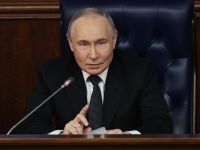During 2009-2011, capital flows were intensively targeting emerging markets, with the advanced economies reducing their interest rates to unprecedentedly low levels and with the quantitative easing experiment gaining wider support from central bankers.
The printed cheap money that amounted to trillions had to seek higher returns, thus, the favorable interest differentials lured investors into the money and capital markets of emerging economies.
At the time, the decoupling theme was adopted by so many economists, which viewed emerging economies as the locomotive for global growth, with contained negative spillover effects from the feeble growth trajectory of the advanced world that was mired in debt and trying to break loose from the vicious feedback-loops between heightened sovereign stress and fragile financial systems.
In spite of this rosy picture, the money was too much to handle, which overheated most of the emerging economies, resulting in elevated inflation and currency appreciation.
The South African Rand, the Brazilian Real, the Chilean Peso and the Indonesian Rupiah had all increased substantially by 40.3 percent, 37.8 percent, 34.6 percent and 20.7 percent, respectively during 2009-2010.
Inflationary pressures escalated beyond the preset target rates or ranges, with Latin American countries like Brazil and Mexico facing 6 percent Y/Y increase in consumer prices while other countries, notably, Turkey and India crossing the 10 percent threshold.
The limited absorptive capacities of these economies meant that their governments had to intervene and erect capital controls in order to fend off the insatiable appetite of foreign investors.
Unsurprisingly, the Finance Minister of Brazil, Guido Mantega, described the situation at the time as “an international currency war”, whereby every country is trying to limit the impact from portfolio investments to avoid currency appreciation that can reduce export competitiveness.
The capital control measures adopted by Brazil, South Korea and Thailand included tax measures on capital gains and interest income earned by foreign investors.
Additionally, minimum investment periods were enforced, with Indonesia applying a one-month minimum holding period for central bank money market instruments.
In 2014, surprisingly enough, the same countries are facing a different situation that can be regarded as the exact opposite. Instead of fending off capital they are trying to reverse course, increasing interest rates to lure investors into bringing more money at the expense of other countries or at least to maintain their positions.
Turkey’s January decision, in which the Central Bank of Turkey (CBRT) raised its benchmark rate from 4.5 percent to a staggering 10 percent, was not only politically motivated to reflect independence from the central government, but it also underscored the susceptibility of a country that have large external funding needs as well as its dependence on the flow of capital, whereby portfolio investments, hot money, represent 83 percent of overall capital inflows.
The Reserve Bank of India, the South African Reserve Bank and the Brazilian central bank had also followed suit by raising their respective benchmarks in a bid to bolster their currencies that ended 2013 with double-digit declines.
It seems we are witnessing an inflection toward a cycle of rising interest rates that will last for a couple of years, with tighter monetary policy gaining traction.
In my opinion, an “interest rate war” will ensue that not only is a natural consequence of the withdrawal of stimulus by the US Federal Reserve, but also a result of governments that did too little to structurally reform their economies when they had ample time and too much funds floating around.
By Tarek Zayadat








